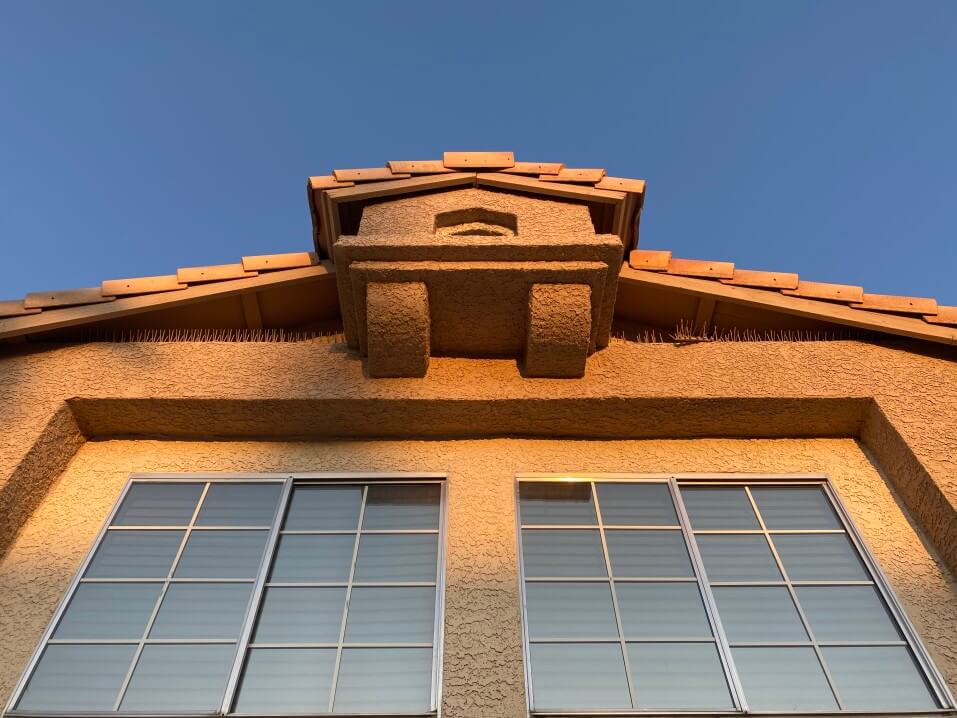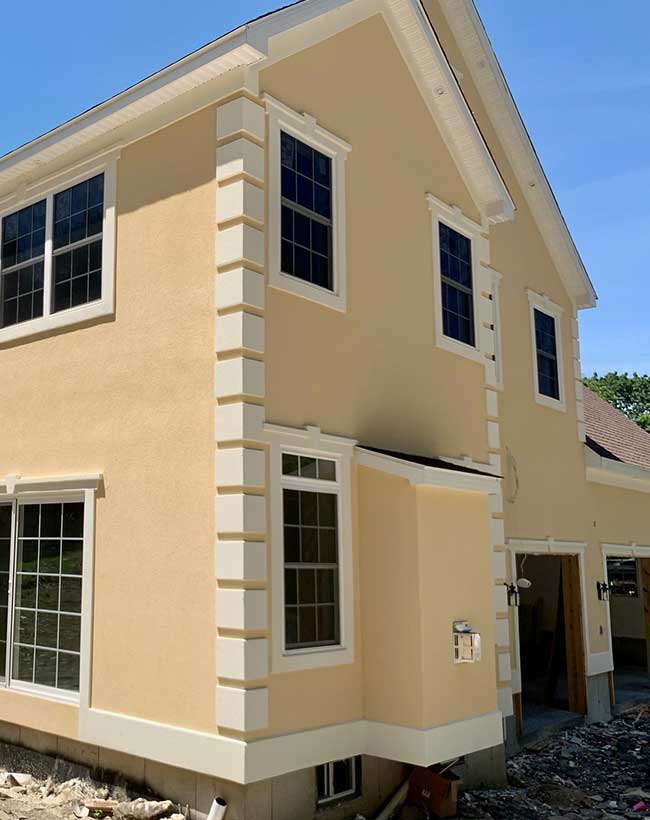Just how to Find a Trustworthy Stucco Contractor for Your Outside Home Makeover
Just how to Find a Trustworthy Stucco Contractor for Your Outside Home Makeover
Blog Article
The Benefits of Deciding On Stucco for Outside Finishes
Choosing stucco for exterior surfaces provides a compelling case for homeowners looking for a mix of toughness, aesthetic versatility, and energy efficiency. Understood for its ability to withstand numerous weather condition problems, stucco not only decreases lasting upkeep costs yet additionally improves the visual allure of any kind of residential property with its array of shades and appearances.

Sturdiness and Longevity
Stucco, a mix of lime, sand, and cement, provides exceptional sturdiness and longevity for exterior surfaces. This material is particularly immune to rough weather, consisting of heavy rain, strong winds, and severe temperatures. Its make-up allows it to stand up to wetness infiltration, consequently decreasing the danger of mold and mildew and mold, which can endanger the stability of various other exterior products.
Stucco is recognized for its reduced upkeep needs, as it does not require frequent repainting or sealing, unlike timber or vinyl house siding. When effectively set up, stucco can last for a number of decades, making it an affordable option in the lengthy run. Additionally, stucco's resistance to cracking and fading makes sure that the visual allure of the exterior remains undamaged in time.
An additional significant benefit of stucco is its fire resistance, a vital consideration for lots of home owners. Unlike timber, stucco does not burn conveniently, offering an added layer of safety (stucco contractor). On the whole, the sturdiness and longevity of stucco make it an excellent option for those seeking a long-lasting and trustworthy exterior surface that can withstand the test of time and environmental obstacles
Visual Adaptability


Additionally, stucco can be quickly tinted utilizing indispensable pigments, providing an extensive palette to select from. This convenience in tone permits personalization, making it possible for structures to harmonize with their surroundings or stand out as one-of-a-kind spots. In addition, stucco can be integrated with other products, such as rock or wood, to produce visually striking contrasts that improve the overall appearance.
The product's ability to be molded right into different shapes even more contributes to its visual charm. Custom attributes like arches, trim, and decorative aspects can be effortlessly incorporated into stucco layouts, enriching the aesthetic complexity of a structure. Generally, the visual convenience of stucco not just enhances the curb appeal of a property but also shows the individual design and choices of the house owner, making it a superb option for outside finishes.
Power Effectiveness
Energy-efficient building materials are important for lowering energy consumption and decreasing energy prices, and stucco stands apart in this regard. Its one-of-a-kind make-up and application add to enhanced thermal efficiency, enabling structures to keep steady indoor temperature levels throughout the year.
Stucco has a high thermal mass, suggesting it can store and soak up warmth during the day and launch it gradually at evening. This home helps minimize extreme temperature level changes, minimizing the reliance on heating and cooling down systems, thus cultivating power effectiveness. Stucco can be used over insulating products, further improving its energy-saving possibility.
In addition, the smooth nature of stucco reduces air infiltration, which can result in undesirable warmth loss or gain - stucco contractor. This airtight barrier not only enhances comfort degrees yet likewise reduces the work on a/c systems, inevitably decreasing power expenses
In addition, stucco's more helpful hints reflective high qualities can decrease heat absorption, especially in warmer climates, which aids in keeping cooler indoor environments and minimizes dependence on cooling. By picking stucco for exterior surfaces, property owners and builders can make considerable strides towards power effectiveness, fostering both ecological sustainability and economic financial savings.
Reduced Maintenance Requirements
What makes stucco an appealing choice for house owners seeking a low-maintenance outside coating? The toughness and resilience of stucco are key variables that add to its reduced upkeep demands.
Stucco is non-combustible and does not bring in insects, significantly minimizing the chance of damages from termites or fire. Its exterior surface area is likewise resistant to mold and mildew and mold, particularly when applied with a top quality surface. Home owners can expect to execute only occasional cleansing with water and moderate detergent to keep its look.
In enhancement, stucco is less susceptible to splitting than other materials, particularly when set up properly with ideal expansion joints. Ought to any fixings be required, they are often straightforward and economical, negating the requirement for considerable restorations. Generally, the combination of longevity, resistance to pests and moisture, and minimal maintenance makes stucco an outstanding choice for my explanation those focusing on a low-maintenance outside coating.
Eco-Friendly Residences
Selecting stucco not only aligns with property owners' desires for reduced upkeep however likewise supplies significant environmentally friendly buildings. Made largely from all-natural products such as cement, sand, and lime, stucco provides a sustainable choice for exterior finishes. Its production procedure eats less power contrasted to artificial products, adding to a reduced carbon footprint.
Additionally, stucco is very long lasting, which translates to a longer life-span and decreased demand for regular replacements. Stucco's thermal mass residential or commercial properties boost power efficiency by managing indoor temperatures, which can lead to reduced heating and air conditioning prices.
Furthermore, stucco can be applied with low-VOC (unpredictable natural substances) paints and finishes, minimizing harmful emissions related to indoor air top quality. Its versatility permits a variety of structures and surfaces, making sure aesthetic charm without compromising eco-friendly stability - stucco contractor. By picking stucco, house owners not only boost their building's appeal yet likewise contribute favorably to ecological sustainability
Conclusion
In recap, stucco offers a compelling option for outside surfaces due to its durability and long life, visual flexibility, energy performance, low upkeep requirements, and environment-friendly residential properties. These characteristics not only improve the aesthetic allure of homes however additionally add to set you back financial savings and ecological sustainability. As house owners seek eye-catching and resilient structure products, stucco stands out as an optimal service, aligning with modern demands for both functionality and ecological responsibility in residential design.
Choosing stucco for outside surfaces provides an engaging case for house important site owners seeking a combination of sturdiness, aesthetic flexibility, and energy effectiveness. On the whole, the visual versatility of stucco not only enhances the curb appeal of a residential property but likewise shows the individual style and choices of the homeowner, making it an outstanding selection for exterior finishes.
What makes stucco an appealing selection for home owners seeking a low-maintenance exterior surface? Made mostly from natural products such as concrete, lime, and sand, stucco provides a sustainable option for outside finishes.In recap, stucco presents an engaging selection for exterior surfaces due to its resilience and longevity, visual flexibility, energy performance, low maintenance needs, and environmentally friendly residential or commercial properties.
Report this page